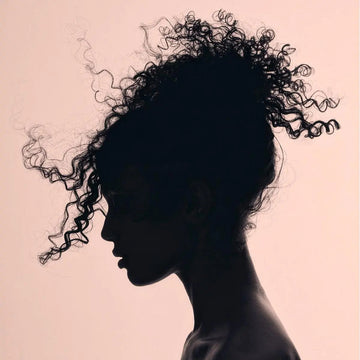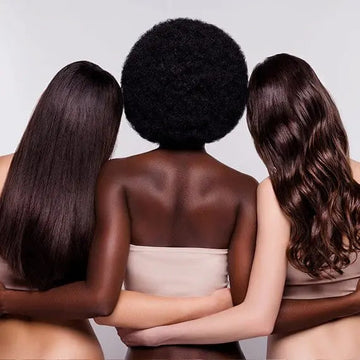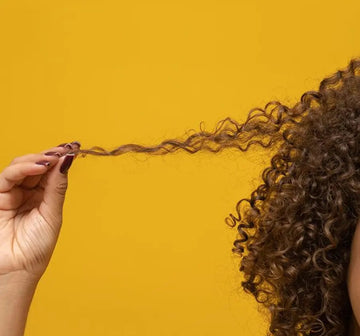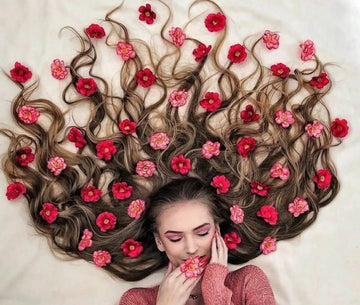What Are Protective Hairstyles for Natural or Curly Hair? A Complete Guide for Healthier Curls 💁🏽♀️
vedle GX X na Jul 29, 2025

Struggling with dryness, breakage, or slow hair growth? You might want to look into protective hairstyles—especially if you have natural, curly, or coily hair. These styles aren’t just gorgeous—they’re essential for maintaining healthy strands, retaining length, and giving your hair a break from daily stress.
In this blog, we’ll explore:
What makes a hairstyle “protective”
Why they’re crucial for natural and curly hair
The best protective hairstyles to try (at home or at a salon)
How to care for your hair while it’s in a protective style
Common mistakes to avoid
Let’s dive into everything you need to know 👇
What Is a Protective Hairstyle?
A protective hairstyle is a style that shields your hair—especially the ends—from damage caused by friction, heat, weather, and over-manipulation. These hairstyles are designed to:
-
Reduce hair breakage
-
Keep your ends tucked away
-
Promote moisture retention
-
Support hair growth by limiting daily styling
They’re especially helpful for natural hair types (type 3 and 4), which are more prone to dryness, tangling, and split ends.

Why Protective Hairstyles Matter for Natural/Curly Hair
Natural hair needs extra love and care. Curly textures tend to dry out faster because scalp oils have a harder time traveling down each coil or curl. Add in styling tools, frequent manipulation, or cotton pillowcases, and it’s a recipe for breakage.
Protective hairstyles give your curls a break by:
-
Minimizing breakage from daily brushing or combing
-
Sealing in moisture longer
-
Protecting ends from split ends and weather exposure
-
Encouraging healthier hair growth over time
They’re a game changer if you're transitioning, managing shrinkage, or recovering from heat or color damage.
The Best Protective Hairstyles for Curly & Natural Hair
Looking for your next go-to look? Here are the top protective styles that are both trendy and effective:
1. Box Braids
One of the most iconic protective styles. Great for all curl types. Lasts 4–6 weeks with proper care.

2. Cornrows
A classic low-manipulation style. Can be worn alone or under wigs/crochet styles. Perfect for active lifestyles.

3. Bantu Knots
Beautiful, edgy, and great for heatless curls. Doubles as a curl-set method.

4. Low Buns and Tuck Styles
Simple yet effective. Keeps ends tucked and protected, especially for medium to long hair.

5. Wigs (with Proper Prep)
Allows full break for your natural hair—just ensure you braid or twist your hair underneath and keep your scalp moisturized.

How to Maintain Protective Hairstyles for Best Results
To get the most out of your protective style and actually grow your curly hair, follow these tips:
-
✅ Moisturize regularly with a lightweight, natural oil—especially one rich in essential fatty acids. Natural scalp oils like Batana oil are packed with nutrients that not only fight dryness but also help stimulate healthy hair growth from the root.💡 Batana oil comes from the American palm tree and is traditionally used by the Miskito people—often referred to as “the hair people”—to restore damaged hair and stimulate regrowth.
 👉 Recommended:
👉 Recommended:
YANIBEST Pure Batana Oil for Hair & Scalp – 100% Natural Cold Pressed
-
✅ Protect hair at night. Use a satin or silk bonnet or pillowcase to reduce friction and moisture loss while you sleep. Cotton fabric can pull moisture from your curls and cause breakage over time.👉 We recommend YANIBEST Satin Bonnet — double-layered, adjustable, and perfect for protecting curls overnight.

-
Pair it with our Satin Pillowcase for extra comfort and protection.

-
✅ Don’t skip scalp care. Cleanse with a diluted shampoo spray or scalp tonic every 1–2 weeks.
-
✅ Limit style duration. 4–6 weeks is ideal. Leaving it in too long may cause tangles or buildup.
-
✅ Avoid too much tension. Tight braids or ponytails can lead to traction alopecia (thinning edges).
💡 Pro Tip: Moisture is the key to healthy curls, even in a protective style!
FAQs About Protective Hairstyles (SEO-Boosted Section)
❓ How long should I leave in a protective style?
Most experts recommend 4 to 6 weeks. Always listen to your scalp—itching, dryness, or buildup are signs it’s time to refresh.
❓ Can protective styles help hair grow?
They help retain length by preventing breakage. While they don’t “speed up” growth, they reduce damage, allowing you to see progress over time.
❓ What are the best low-maintenance protective hairstyles?
Try large two-strand twists, low buns, or braided wigs. They require minimal daily styling and are gentle on the scalp.
❓ Do I need to use satin bonnets or pillowcases?
Yes! Sleeping on satin helps reduce friction and retains moisture—especially important for curly textures.
Final Thoughts: Protective Styles Are More Than Just a Trend ✨
Whether you’re new to natural hair or a seasoned curl queen, protective hairstyles are one of the best tools to support hair health. They’re not just a style choice—they’re a form of self-care and celebration of texture.
Try a few styles and find what works best for your routine. And don’t forget: what’s happening under the style (like moisture and scalp care) matters just as much as the style itself.
🛑 Want to learn more about maintaining healthy natural hair while sleeping, traveling, or styling? Stay tuned for our next blog on overnight hair care essentials. 💕




